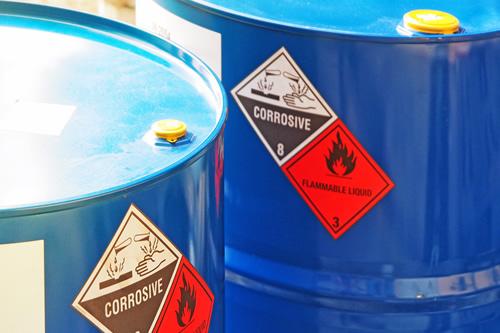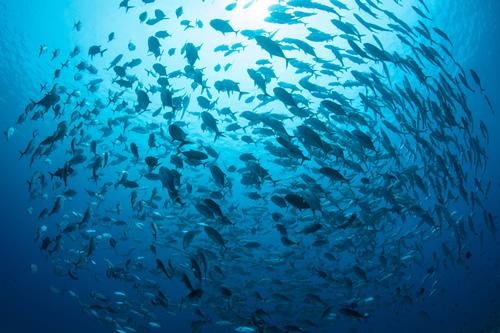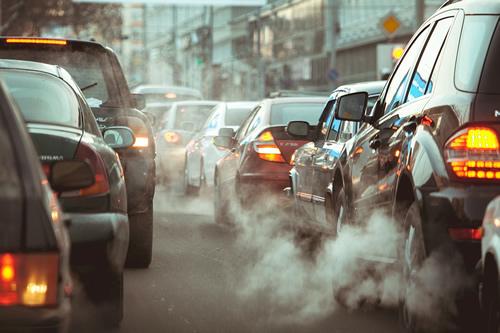Foundation Courses
Elective Courses
Foundation Courses
ENVS 5111 — Environmental Health [3 credits]
Course Coordinator: Prof. Yusong GUO
This course is an introduction to the field of Environmental Health and Safety, the study of how environmental factors, including biological, physical, and chemical factors, affect human health. The course also identifies the potential health hazards and emphasizes on the importance of environmental health for moral, legal and financial reasons. Environmental health management systems, as well as roles of health professionals will also be discussed.
Intended Learning Outcomes
Upon successful completion of this course, students should be able to
- Understand the definitions and principles of environmental health;
- Describe approaches for assessing, preventing and controlling environmental hazards that pose risks on human health;
- Apply the knowledge obtained to the real working situation appropriately and efficiently;
- Apply basic ideas and knowledge for further specialized study in the field.
Recommended Readings
- Essentials of Public Health Biology: Biologic Mechanisms of Disease and Global Perspectives
By Loretta DiPietro, Julie Deloia, & Victor Barbiero - Living with the Earth: Concepts in Environmental Health Science
By Gary S. Moore, Taylor & Francis Group - Microbiology: An Introduction
By G.J. Tortora, B.R. Funke & C.L. Case
ENVS 5114 — Environmental Diseases and Microbiology [3 credits]
Course Coordinator: Prof. Stanley LAU
To acquire fundamental understanding of
- The diversity & function of microorganisms in natural and man-made environments
- Different environmental matrices and animals as reservoirs of microbial pathogens; the types of diseases caused by those pathogens; and the route of transmission
- Emerging diseases that are prevalent in particular geographic regions
- Principal and methods to track the source and spread of microbial pathogens
- Antibiotic resistance and spread of antibiotic resistant pathogens in the environment
Intended Learning Outcomes
Upon successful completion of this course, students should be able to
- Understand the role of the physical environments in the dispersal of pathogens and in the transmission of diseases
- Evaluate the effects of climate change on disease epidemiology
- Analyze the roles of socio-economic factors in the emergence of new diseases and the emergency of antibiotic resistant microbes
ENVS 5115 — Food Safety Control [3 credits]
Course Coordinator: Dr. Shui Yee LEUNG
Food safety is an essential public health issue for all countries. This course aims to address the key issues involved in food safety and control. Topics ranging from how to identify common food hazards to how these hazards are controlled via various systems will be discussed. Changes in food safety legislation as well as several high profile food safety issues will also be covered.
Intended Learning Outcomes
Upon successful completion of this course, students should be able to
- Describe the major foodborne hazards involved in common foodborne diseases and understand the potential controls of these hazards;
- Understand and explain how the food surveillance programme is designed to control and prevent food hazards;
- Understand the basic food laws and regulations and recognize the roles of various international agencies involved in food safety control;
- Evaluate the principles behind the process of risk analysis, the procedures in risk assessment and the HACCP system.
Recommended Reading
- Paul L. Knechtges. Food Safety: Theory and Practice. 2012. Jones & Bartlett Learning, Burlington, MA.
- Ian C. Shaw. Food Safety: The Science of Keeping Food Safe. 2013. John Wiley & Sons, Ltd, UK.
- Carol A. Wallace, William H. Sperber and Sara E. Mortimore. Food Safety for the 21st Century: Managing HACCP and Food Safety throughout the Global Supply Chain. 2011. John Wiley & Sons, Ltd, UK.
ENVS 5117 — Public Health and Hygiene [3 credits]
Course Coordinator: Dr. Shui Yee LEUNG
This course offers new perspectives of public health and hygiene, emphasizing on practical aspects of epidemiological investigations and public health risk assessment issues in relation to environmental health will also be covered. Students will review the harmful or toxic effects of drugs on human health and environment, and epidemiological studies on both infectious and non-communicable diseases, which will be relevant to students pursuing a career in the public health sector.
Intended Learning Outcomes
Upon successful completion of this course, students should be able to
- Define fundamental principles of public health and hygiene.
- Illustrate risk assessments principles for defining environmental toxicants.
- Interpret the contemporary efforts in controlling environmental health from global perspectives.
- Recognize important and basic standards in drug developments and manufacturing, and describe the roles interplayed by pharmaceutical sector.
- Formulate important skill-set in presentation and reporting from developing collaborative projects.
Elective Courses
ENVS 5112 — Environmental Hazards [3 credits]
Course Coordinator: Prof. Hongbin LIU
This course aims to provide
- Fundamental understanding of major natural & man-made environmental hazards;
- Adjustment, preventive measures for natural hazards;
- Potential effects of environmental hazards on the abiotic and biotic environment through various routes and doses of exposure;
- Current approaches of identification and managing environmental hazards;
- Hazards assessment and risk management.
Intended Learning Outcomes
Upon successful completion of this course, students should be able to
- Identify major natural and manmade environmental hazards
- Check adjustment and preventive measures for natural hazards
- Evaluate the impacts of environmental hazards on the abiotic and biotic environment through various routes and doses of exposure
- Apply the principle and knowledge in environmental hazards identification, risk assessment and management to handle hazards emission problems
Recommended Readings
- Environmental Hazards: Assessing Risk and Reducing Disaster, 6th edition by Keith Smith. Published 16th January 2013 by Rutledge.
- Ecosystems and Human Health: Toxicology and Environmental Hazards. Richard B. Philp. Third edition. CRC Press, Taylor & Francis Group, [2013]
- Hazard to Human Life, in “Expansion of Hong Kong International Airport into a Three-Runway System”, Environmental Impact Assessment Report. https://www.epd.gov.hk/eia/register/report/eiareport/eia_2232014/html/Ch%206%20-%20Hazard%20to%20Human%20Life.htm
- Health hazards, in “Expansion of Hong Kong International Airport into a Three-Runway System”, Environmental Impact Assessment Report. https://www.epd.gov.hk/eia/register/report/eiareport/eia_2232014/html/Ch%2017%20-%20Health.htm
- Classification and Labelling of Chemicals, Globally Harmonized System of Classification and Labelling, Control Of Dangerous Goods In Hong Kong, Cap. 295B DANGEROUS GOODS (GENERAL) REGULATIONS, (Dangerous Substances) Regulations, Code of Practice on the Packaging, Labelling and Storage of Chemical Wastes, etc.
ENVS 5113 — Marine Ecotoxicology
Course Coordinator: Dr. Shui Yee LEUNG
This course introduces the impacts and toxic effects of environmental pollutants on growth, morphology and species richness of marine organisms with emphasis at the population, community and ecosystem level. Concepts and methods to assess the impacts of toxicants in marine organisms and environment will also be discussed.
Type of Course
Elective Course, 3 credits
Intended Learning Outcomes
Upon successful completion of this course, students should be able to
- Understand the scope of ecotoxicology study and recognize the major classes of pollutants;
- Understand the major concepts in ecotoxicology study, such as the entry and fate, bioaccumulation and bioavailability;
- Understand the ecological and biological responses of pollutants at different levels;
- Learn methods in conducting ecotoxicology research, such as the kinetic modelling, biomonitoring, toxicity testing, biomarkers and toxicity mechanisms study.
Recommended Readings
- Newman MC, Clements WH (2015) Fundamentals of Ecotoxicology: The Science of Pollution. CRC Press
- Wang W-X (2012). Trace metal ecotoxicology and biogeochemistry. Science Publisher (in Chinese).
ENVS 5116 — Environmental Impact and Risk Assessment
Course Coordinator: Prof. Hongbin LIU
This course consists of 4 major areas
- An overview of the EIA and SEA process, the Technical Memorandum, and the EIA Ordinance in HK
- The EIA Process
- Environmental screening and scoping
- Impact assessments
- Water quality
- Air quality
- Noise
- Waste management
- Ecology
- Environmental Risk
- Other impacts (e.g. cultural heritage, socio-economic)
- Public participation
- Review of EIA report and decision making
For each impact assessment, the legislation, identification of impacts, assessment methodology, mitigation, and monitoring will be covered.
- Environmental monitoring, management and auditing
- Comparison between EIAs in HK and Mainland China; International EIA
Major case study for the whole course: Penny’s Bay Theme Park Project in Hong Kong.
Type of Course
Elective course, 3 credits
Intended Learning Outcomes
On successful completion of this course, students are expected to be able to
- Explain the relationships between economic development, human health, and environmental sustainability.
- Become familiar to the legal base and common practice of environmental impact assessment in Hong Kong.
- Apply the principles and knowledge in environmental and risk impact assessments to solve environmental problems.
- Compare the practice of environmental impact and risk assessment across different regions, and gain a good understand of international trend for assessing the impact of large development project.
- Be aware of the environmental challenges Hong Kong, China as well as the world is facing and become a responsible citizen to have a positive contribution to the achievement of a sustainable environment.
Recommended Readings
EPD Materials
- Environmental Impact Assessment Ordinance (EIAO), EPD (http://www.epd.gov.hk/epd/eia/english/legis/index1.html)
- Technical Memorandum on EIA Process, EPD (http://www.epd.gov.hk/epd/eia/english/legis/index3.html)
- EIA Report on International Theme Park at Penny’s Bay (http://www.epd.gov.hk/epd/eia/register/report/eiareport/eia_0412000/index.html)
- EPD Website (http://www.epd.gov.hk)
Books
- Glasson, J., Therivel, R. and Chadwick, A. (2012) Introduction to Environmental Impact Assessment. Fourth edition. UCL Press.
- Lee, N. and George, C. (2000) Environmental Assessment in Developing and Transitional Countries. John Wiley & Sons Ltd.
- Marriot, B.B. (1997) Practical Guide to Environmental Impact Assessment. McGraw-Hill. (USA perspective)
- Morris, P. and Therivel, R. (2001) Methods of Environmental Impact Assessment. Second edition. Spon Press.
ENVS 5118 — Conservation and Sustainable Development
Course Coordinator: Prof. Peiyuan QIAN
This course aims to address the importance of different elements and practices in conserving our biodiversity. It also introduces the concept of sustainable development to meet the future needs and balance the stakeholder interests among society, economy and environment. It explores ways of finding solutions to the challenges through the promotion of sustainable development.
Type of Course
Elective course, 3 credits
Intended Learning Outcomes
Upon successful completion of this course, students should be able to
- Appraise the importance of different elements and practices in conserving our biodiversity.
- Describe the concepts of sustainable development to meet the future needs and balance the objectives between society, economy and environment.
- Apply relevant ecological principles and management techniques to solve real life environmental conservation problems.
- Critically evaluate the merits, limitations and future trends in environmental conservation and sustainable development.
Recommended Readings
- Chiras, Daniel D., Reganold, John P. Natural resource conservation: management for a sustainable future (10th Edition). 2010. Pearson Education, Inc. Upper Saddle River, NJ.
ENVS 5119 — Pollution Monitoring and Control
Course Coordinator: Prof. Jian Zhen YU
This course introduces environmental consequences of air, water, soil and noise pollution. It also considers theoretical and practical aspects of the design and execution of pollution monitoring programmes. Major issues related to pollution control, such as applications of modern control technologies, pollution-related legislation and regulations, will also be discussed.
Type of Course
Elective course, 3 credits
Intended Learning Outcomes
Upon successful completion of this course, students should be able to
- Understand environmental consequences of air, water, soil and noise pollution
- Evaluate air and water quality objectives and standards in Hong Kong and elsewhere
- Develop experimental designs and sampling strategies for monitoring programmes and evaluate their effectiveness in pollution monitoring
- Explain the importance and principles of pollution control, including the interactions between production, technology and regulation/ legislation
- Apply relevant ecological and toxicological principles to problems related to pollution control
Major References
- Davis, M.L., Cornwell, D.A. Introduction to Environmental Engineering (5th Edition). 2013. McGraw Hill, New York, USA.
- Cooper, C.D., Alley, F.C. Air Pollution Control: A Design Approach. 2011. Waveland Press, Prospect Heights, IL.
- Hocking, M.B. Handbook of Chemical Technology and Pollution Control. 2005. Elsevier/ Academic Press, San Diego, CA.
- Reeve, R.N. Introduction to Environmental Analysis. 2002. John Wiley & Sons, Ltd, England.
- Harrison, R.M. Pollution: Causes, Effects and Control (4th Edition). 2001. The Royal Society of Chemistry, Cambridge, UK.
ENVS 5120 — Occupational Health and Safety
Course Coordinator: Prof. Joseph KWAN & Prof. Samuel YU
This course will cover the recognition, evaluation and control of various physical, chemical, biological and ergonomic hazards encountered in the occupational environmental. Emphases will focus on the nature and impact of these hazards, assessment methods and corresponding control measures to ensure protections of workers’ health and compliance with regulatory requirements.
Type of Course
Elective course, 3 credits
Intended Learning Outcomes
Upon successful completion of this course, students should be able to
- Anticipate and recognize common hazards of selected work environment;
- Find suitable instruments to assess such hazards;
- Interpret/appraise simple hazard assessment results;
- Recommend/critique basic control measures;
- Describe legal requirements for protection of worker’s health and safety;
- Be recognized by the proficiency of occupational health and safety in workplace by Health, Safety and Environment Office, HKUST.
Reference book
- Daniel H. Anna. The Occupational Environment: Its Evaluation, Control and Management. 2011. Vol 1, 3rd Edition. American Industrial Hygiene Association, VA.
ENVS 6111 — Environmental Health Research Project
Course Coordinator: Prof. Peiyuan QIAN & Dr. Shui Yee LEUNG
This course enables students to conduct an independent research project in selected areas of environmental health and safety or related topics under the supervision of one or more Faculty members. Students will demonstrate their initiative and intellectual achievement of the investigation through the application of skills and knowledge learnt from the courses. They can develop their abilities to present findings in a precise and coherent manner.
Type of Course
Elective course, 3 or 6 credits
ENVS6111A (Fall semester) – 3 credits
- Lab research; or
- Literature review
ENVS6111B (Fall + Spring semester) – 6 credits
- Lab research
ENVS6111C (Spring semester) – 3 credits
- Lab research; or
- Literature review
*The project type cannot be overlapped for 6111A and 6111C.
EVSM 5220 — Advanced Environmental Chemistry
The course provides an in-depth coverage of topics on inorganic and organic environmental contaminants, their structures, functions, sources and emissions, distribution, transformation and fate in the environment.
Type of Course
Elective course, 3 credits
Intended Learning Outcomes
Upon successful completion of this course, students should be able to
- Develop understanding on the fundamentals of chemistry of the four major environmental compartments, i.e., atmosphere, hydrosphere, lithosphere, and biosphere
- Explain the essential chemistry facts behind a number of well recognized environmental issues
- Identify chemical topics relevant to the environment
- Conduct literature searching and information synthesis related to environmental chemistry
- Communicate effectively chemistry issues behind environmental problems both orally and in writing to technical and nontechnical audience
EVSM 5230 — Environmental Health and Management
The course will give an overview on environmental health and management, including topics on outdoor and indoor environments, workplace environment, water and sewage, food, solid waste, hazardous wastes, vectors and control, radiation, environmental health standards, natural and manmade disasters, risk assessment and management, etc. Each topic will include nature of the issue, known and potential health effects, control and regulatory approaches. More in-depth discussions will be given to occupational health hazards, with emphases on current control methods and technology.
Type of Course
Elective course, 3 credits
Intended Learning Outcomes
Upon successful completion of this course, students should be able to
- Recognize the human health impact of various hazardous physical, chemical and biological agents encountered in the environment
- Assess the degree of hazard of various physical, chemical and biological hazardous agents encountered in the environment
- Employ various hazards control measures to manage and control the environmental health hazards to within acceptable levels
- Be familiar with relevant regulatory requirements and challenges in managing various environmental health hazards
- Apply knowledge in their daily life to better manage environmental health for themselves and the community
JEVE 5320 — Water Quality and Assessment
Water quality standards, chemical, physical and biological contaminants in water. General laboratory measurements and instrumental analysis based on optical, electrical and chromatography methods. Toxicity and BOD tests. Pathogenic micro-organisms and microbial examination of water. Environment sampling and quality control and assurance.
Type of Course
Elective course, 3 credits
Intended Learning Outcomes
Upon successful completion of this course, students should be able to
- Identify and quantify the water pollutants of the conventional wastewaters such as municipal wastewater, industrial wastewater, clinical wastewater, etc.
- Understand and introduce the fundamental knowledge on the practical wastewater treatment processes with specific wastewater sources
- Quantify and evaluate the wastewater treatment processes’ efficiencies via specific characterization techniques like Fourier Transform Infra-Red Spectroscopy for organic group detection, Inductively Coupled Plasma for metal ion quantification, UV-vis Spectroscopy for organic compounds analysis, etc.
- Conduct and design a quantitative and qualitative methodology for analyzing the water quality via a project based case study.
- Develop the students’ communication skills, critical and logical thinking via a research project.
JEVE 5420 — Biological Waste Treatment and Management
Principles of secondary, biological treatment processes, including sewage sand filters, trickling filters, activated sludge plants, lagoons, ponds, rotating biological contactors, aerobic and anaerobic digesters, and biological nutrient removal. Management of waste treatment systems and works.
Type of Course
Elective course, 3 credits
JEVE 5440 — Hazardous Waste Management
This course aims to provide students with necessary management concepts and skills in addressing the burgeoning intricate problems of hazardous waste created by the rapid urban development. Hazardous waste characterization will be discussed in terms of toxicology and standard test methods. Necessary regulations and legal framework on hazardous waste storage, import / export, transport and disposal / treatment will be covered. The contingency plan for accidental hazardous waste release and the associated remediation methods will be presented. Local and overseas case studies will be discussed as practical examples of the cradle-to-grave hazardous waste management.
Type of Course
Elective course, 3 credits
JEVE 5530 — Environmental Management and Regulatory Compliance
The course aims at teaching students the principles of corporate sustainability and environmental management as well as the major environmental laws and good compliance practices in Hong Kong.
The course consists of:
Part I on Environmental Management covering essential topics including environmental management for sustainability, corporate environmental challenges and governance, ESG reporting, environmental and energy management systems; and Part ll on Regulatory Compliance covering major environmental laws and compliance practices in Hong Kong.
Type of Course
Elective course, 3 credits












